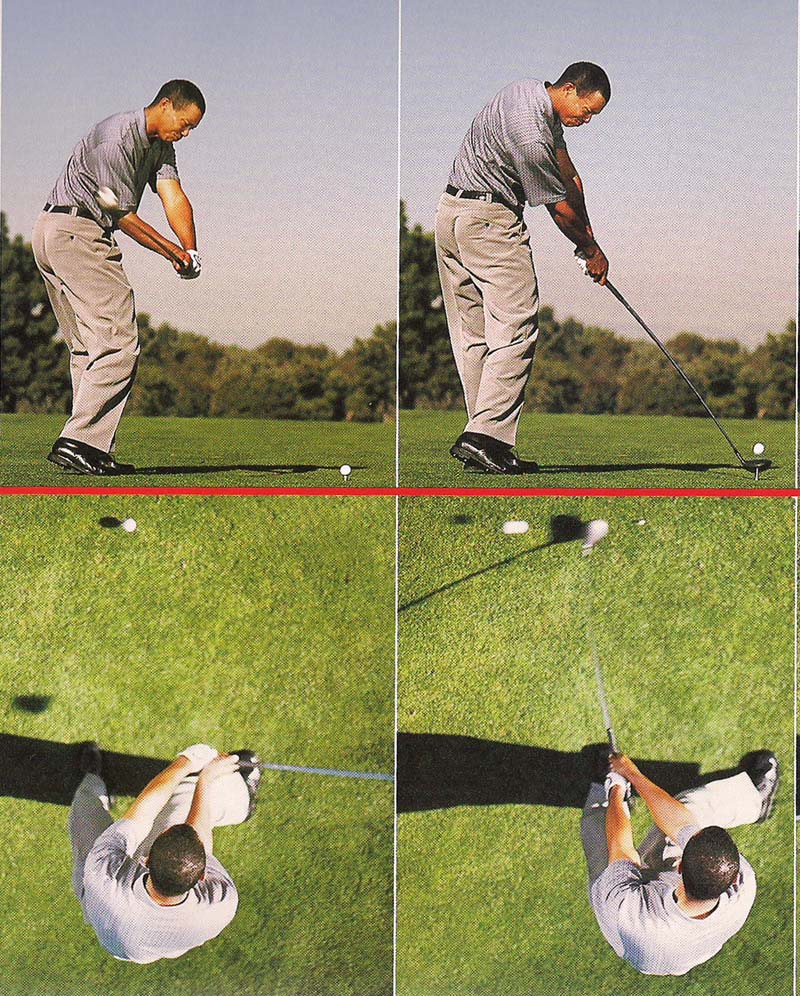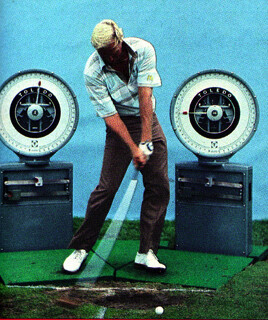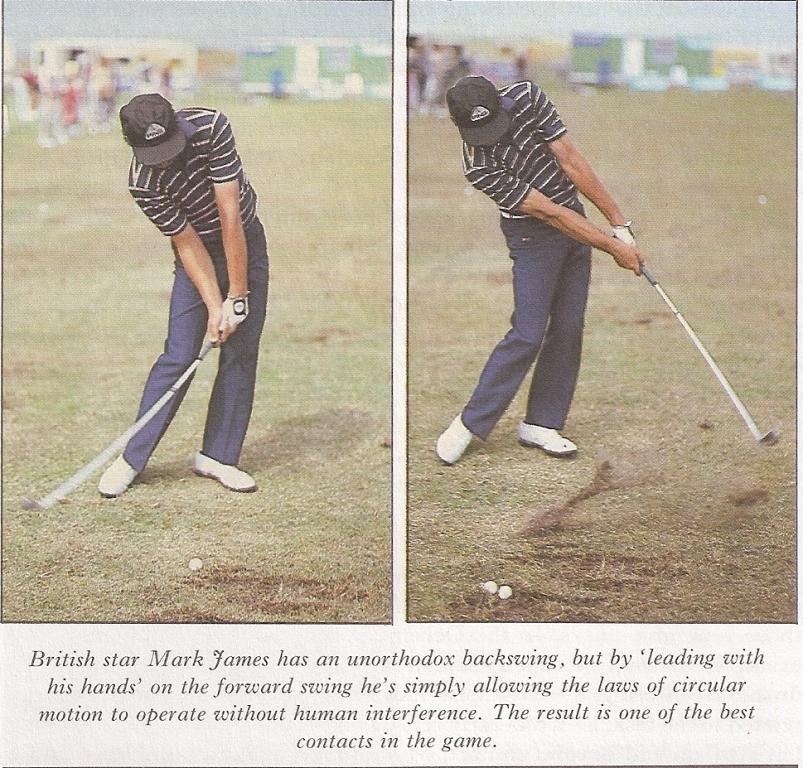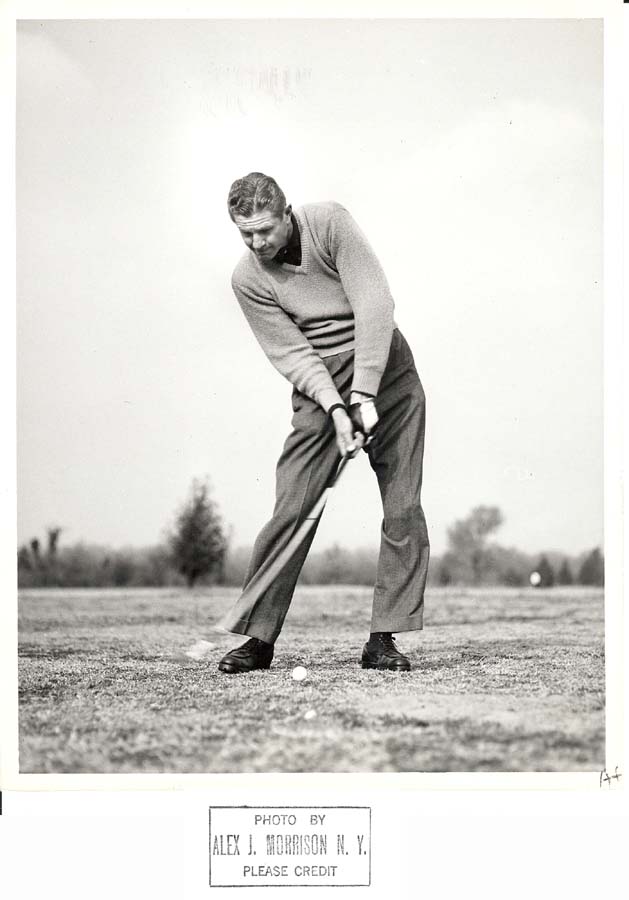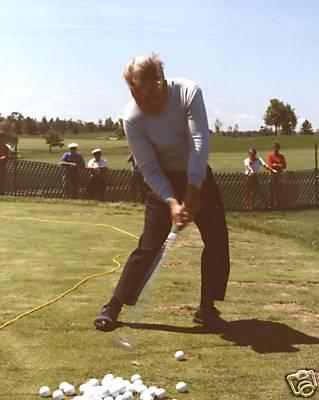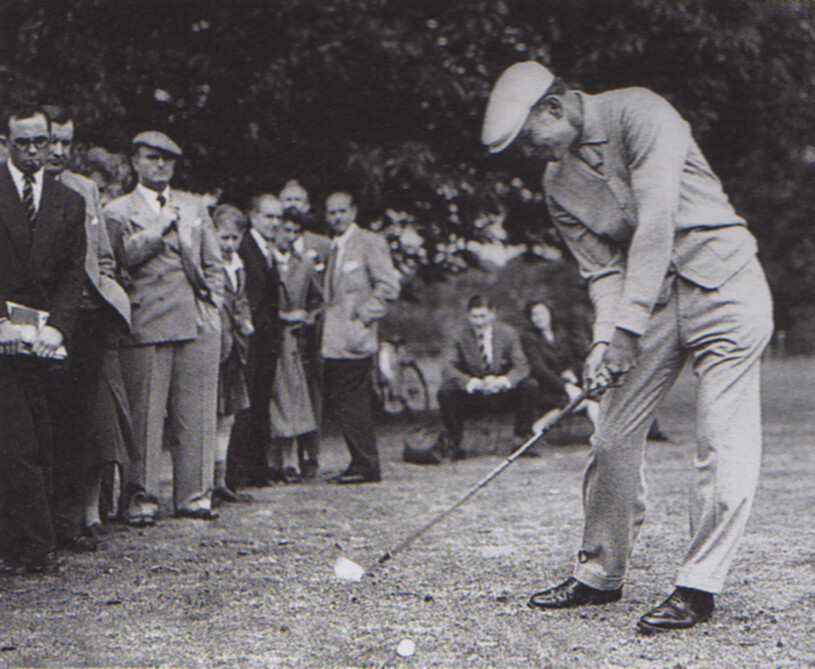In my search for golfing idealism, I came to the realization that the ultimate objective of the swing would be to hold the flex of the shaft all the way to the ball. This could only be accomplished through radial acceleration. Hence hitting. I believe that to reach a level of the game
where a golfer could truly become a rock solid ball striking machine, that would rarely ever miss hit a shot, this would be the best route to pursue. I think Mac O’ Grady was searching along these lines as well.
As soon as acceleration reaches zero, the lag pressure on the shaft releases, and instead of the shaft flexing back, putting pressure on all the pressure points which is the lifeline of the master ball strikers feel,
this feel is diminished and the player will not feel force coming up the shaft until the ball is actually struck. To have the ability to constantly monitor the progression of the flex of the shaft all the way down to the ball and beyond would be the ultimate situation for masterful ball striking.
Now if you say that such a pursuit is not realistic, then swinging would offer the next best solution. The logic behind swinging is that acceleration of the shaft would not be intended to hold the flex to the ball but to “time” the downward thrust of the centrifugal force created in the swing by it’s moving in a circle, and this force is to be dumped roughly at the low point of the golfer’s swing arc.
FORCE equals MASS times ACCELERATION. Therefore, the protocol that would create the most force in a golf swing would have to be hitting… for the obvious reason that as you increase acceleration, you increase force as well. Given the same rate of acceleration, you would be wiser to use a heavier club.
John Morse, who won the Australian Open in the early 90’s new this,
he has the heaviest clubs I have ever seen in a tour player’s bag.
Another advantage of striking a golf ball with more FORCE is that the more force the clubhead creates, the less the clubhead will wobble at impact with the ball, and more of the clubhead’s energy will be transfered into the ball… or as TGM would teach, “to sustain the line of compression”
The problem with hitting is that although this all sounds good, how does a golfer go about continuing to accelerate the club to the ball and beyond? It’s certainly easier to produce speed from the top of the backswing down to the ball, than it would be to produce speed from impact to the finish. The later is essentially what needs to happen.
This is why I believe that golf is the toughest, most difficult game ever invented. A golfer has no choice but to deal with this paradox.
If a golfer can figure out how to do this, actually move the peak accelerate point in the swing past the ball… you might find yourself being one of the greatest ball strikers of all time.
It’s a noble pursuit…

